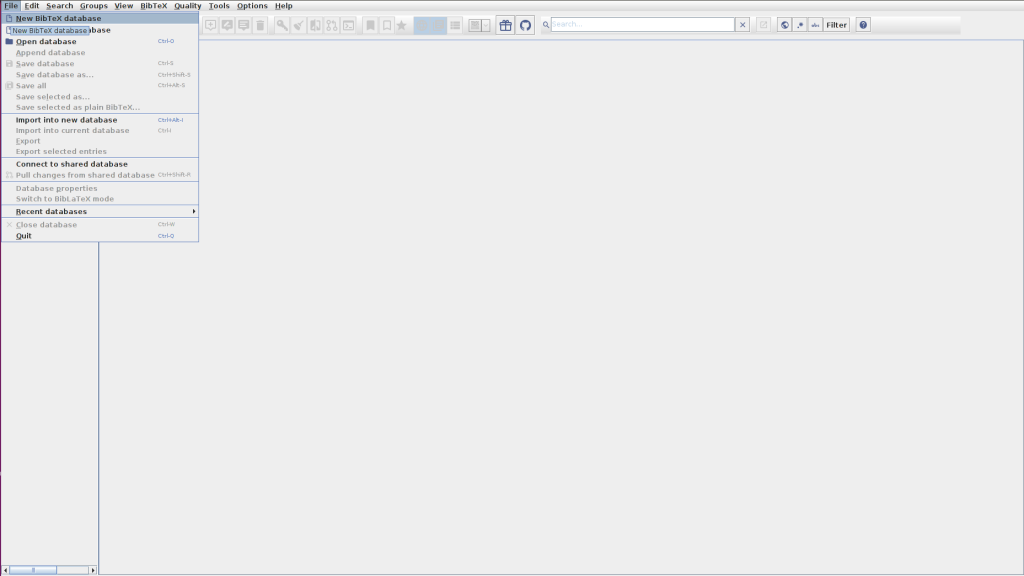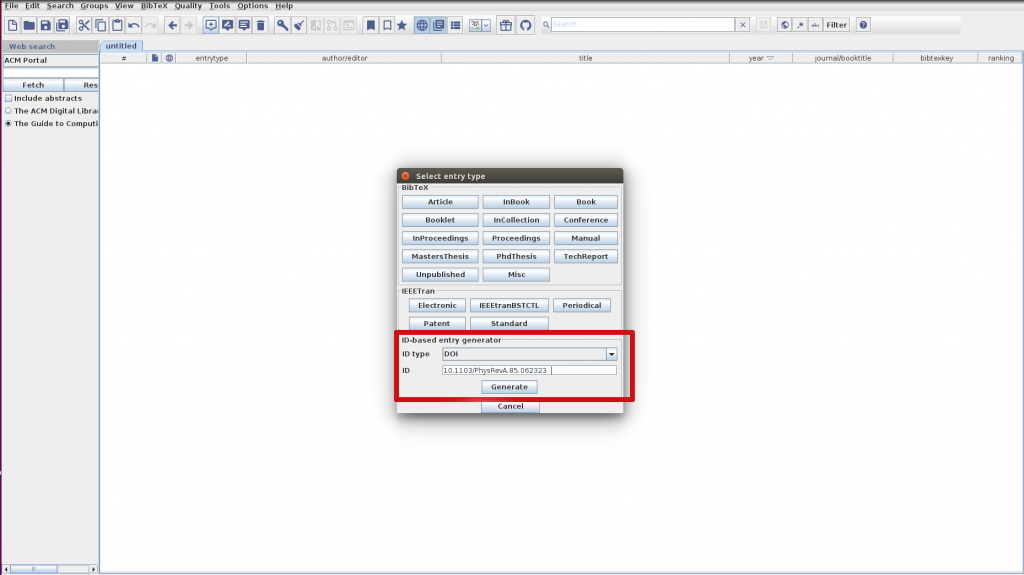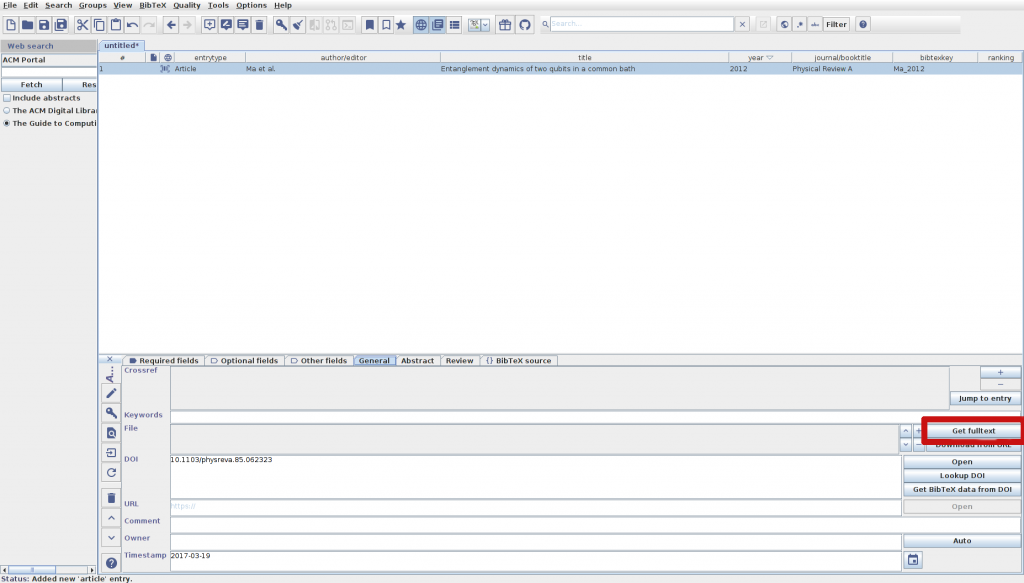If you are in a field where you’re mostly citing papers, use LaTeX to generate your documents and can rely on DOIs (digital object identifier system), Jabref makes it amazingly simple to build your bibliography file. All you have to do is add the DOI to the corresponding field and let Jabref do its magic!
But first, what is a bibliography reference manager anyhow?
If you want to write any form of document where you have to cite your sources, a bibliography reference manager makes it easy to i) collect all your sources in one place and ii) cite them in your document easily without having to worry about the formatting or having to remember all the details.
Jabref does this by using BibTeX and giving it an easily editable front. BibTeX already is software to manage your references, but it can be cumbersome to enter all your references by hand. Additionally Jabref makes it easy to attach files containing the full text of your source to the reference entries, making it easy to navigate your sources not only for citing them, but also for reading. As it is using BibTeX, it is most useful, if you generate your documents using the LaTeX document preparation system.
How to get your bibliography reference started
You can download Jabref here.
First create a new database. Here you can choose between BibTeX and BibLaTeX. Here is a good comparison between the two. However, if you later want to change your database type, you can simply create a new one in your desired format and import the old one.
 Now you can enter your first source. In the toolbar, click on the text bubble showing a plus and you’ll get prompted to choose the type of your entry. You can either choose the format and enter the data manually, or if you have access to the DOI, you can just switch the ID type to DOI, enter your DOI and generate the database entry. It’s as simple as this!
Now you can enter your first source. In the toolbar, click on the text bubble showing a plus and you’ll get prompted to choose the type of your entry. You can either choose the format and enter the data manually, or if you have access to the DOI, you can just switch the ID type to DOI, enter your DOI and generate the database entry. It’s as simple as this!
There are also other ID types supported (such as Arxiv and ISBN), so choose the one most convenient for you!
If you want to, you can also try to download the full text of your source. To do this, double click your new entry and switch to the “General” tab. There you should find the “Get Full Text” button.
It might well be, that you have sources that are not as easily available online, or locked behind a paywall. Maybe you have not access to DOIs. If you encounter any troubles, they have a nice documentation!
To cite your new sources, you can directly import them into some of the most common editors, by pressing the “Push to …” button in the toolbar. For a list of supported editors see here.

